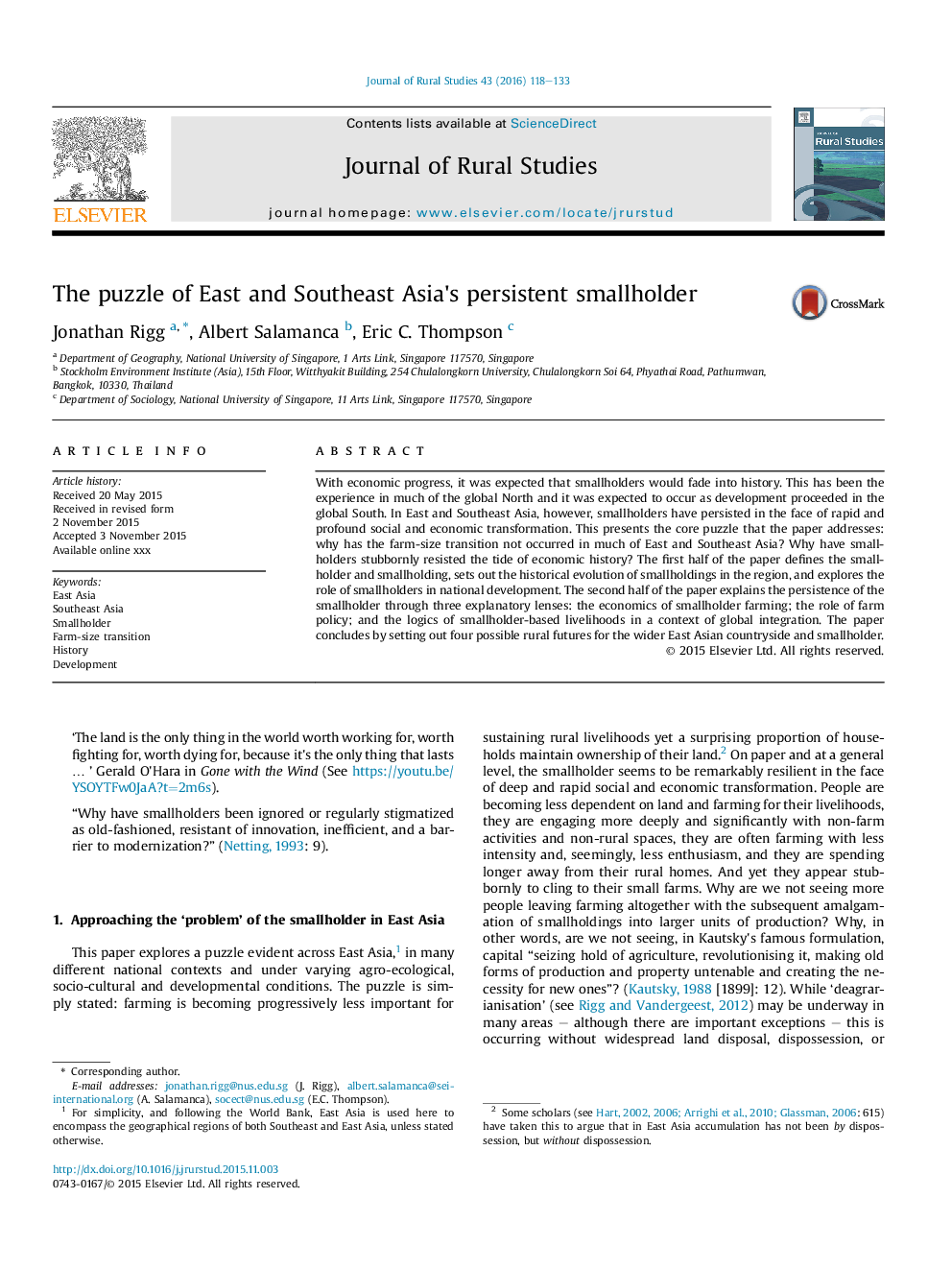| Article ID | Journal | Published Year | Pages | File Type |
|---|---|---|---|---|
| 6545530 | Journal of Rural Studies | 2016 | 16 Pages |
Abstract
With economic progress, it was expected that smallholders would fade into history. This has been the experience in much of the global North and it was expected to occur as development proceeded in the global South. In East and Southeast Asia, however, smallholders have persisted in the face of rapid and profound social and economic transformation. This presents the core puzzle that the paper addresses: why has the farm-size transition not occurred in much of East and Southeast Asia? Why have smallholders stubbornly resisted the tide of economic history? The first half of the paper defines the smallholder and smallholding, sets out the historical evolution of smallholdings in the region, and explores the role of smallholders in national development. The second half of the paper explains the persistence of the smallholder through three explanatory lenses: the economics of smallholder farming; the role of farm policy; and the logics of smallholder-based livelihoods in a context of global integration. The paper concludes by setting out four possible rural futures for the wider East Asian countryside and smallholder.
Related Topics
Life Sciences
Agricultural and Biological Sciences
Forestry
Authors
Jonathan Rigg, Albert Salamanca, Eric C. Thompson,
